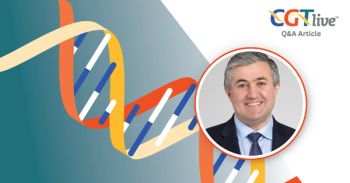
Deborah Phippard, PhD, on the History and Current State of Gene Therapy for Neurological Indications
The chief scientific officer of Precision for Medicine discussed the previous and current delivery methods used for gene therapies and new innovations on the horizon.
“[Gene therapy has] a long, varied history that has been going for more than 80 years now. Year by year, I see more and more innovations in gene therapy in terms of the design and the delivery... So looking at all those different research strings that are being worked on right now, it's such a dynamic field. I could literally talk for an hour about the history of gene therapy and where we're going for all those different paradigms that we're researching at this point in time.”
The origin of gene therapy traces back to the 1960s, when studies with retroviruses served as a proof-of-concept for the modality. Since then, numerous developments have occurred, with both ex vivo and in vivo viral delivery methods including lentiviruses and adeno-associated viruses (AAV) now also being utilized. As of now, more than 1,500 clinical trials have been conducted or are being conducted; a significant portion of these have been focused on addressing central nervous system (CNS) indications.
In order to learn more about the history and current state of gene therapy in CNS indications, CGTLive™ spoke with Deborah Phippard, PhD, the chief scientific officer of Precision for Medicine, a clinical research services organization. Phippard noted that lentivirus delivery methods have become the standard for ex vivo approaches and AAV has become the standard for in vitro approaches, while retroviruses have largely been superseded by these. Phippard also emphasized the unique challenge of targeting CNS diseases with gene therapies, noting the difficulty of crossing the blood-brain-barrier, and discussed the various approaches currently being evaluated to address this ongoing hurdle. She additionally spoke about how thus far, the treatment of single-gene lysosomal disorders with gene therapy has only provided a proof-of-concept for gene therapy’s promise, with the modality having the potential to address more complex diseases in the future as the science advances. She noted Parkinson disease, Alzheimer disease, and obesity as examples of complex conditions where gene therapy could have an impact in the future.
Newsletter
Stay at the forefront of cutting-edge science with CGT—your direct line to expert insights, breakthrough data, and real-time coverage of the latest advancements in cell and gene therapy.
















































